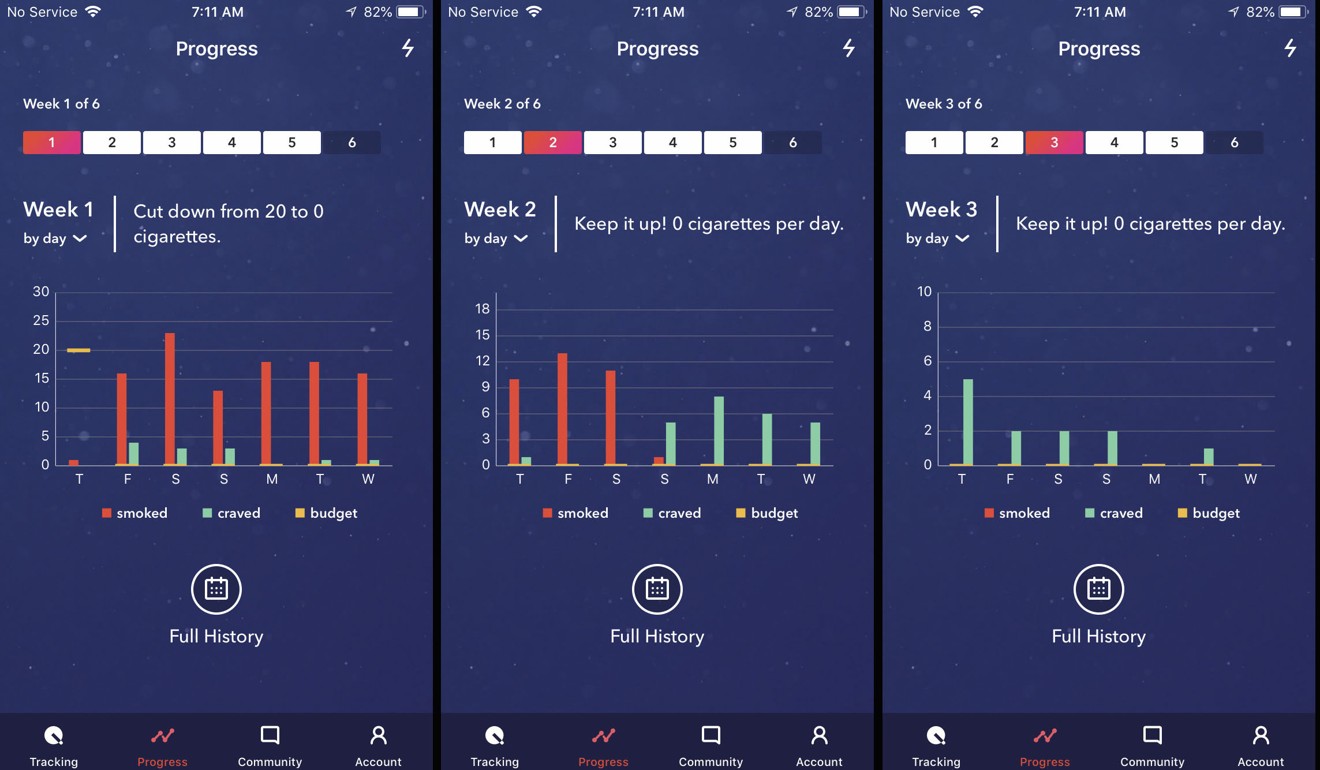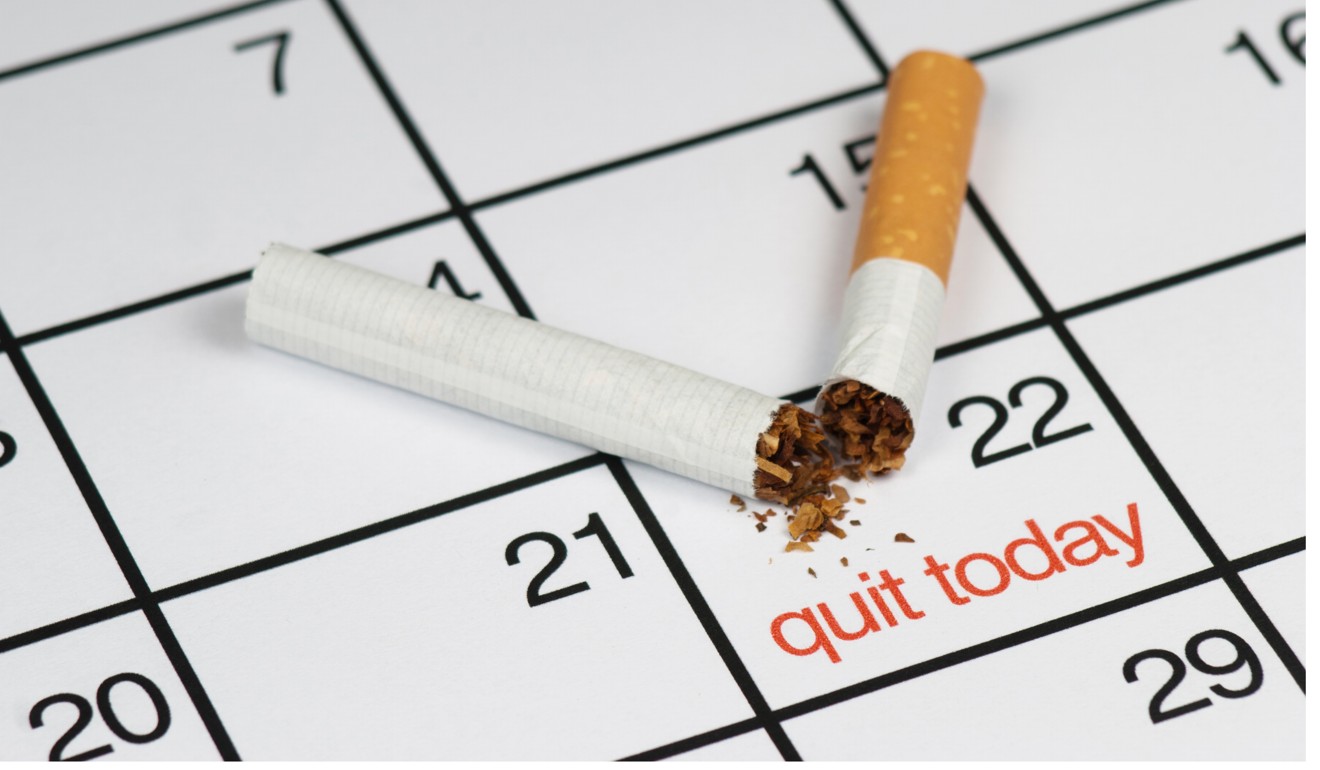
How to quit smoking: five tips from a smoker who stopped after 35 years
Mark Sharp has smoked since he was a teenager. After a number of failed attempts, he’s now been able to avoid having a cigarette for over a month. He offers advice on kicking the habit for good
Almost three weeks into my new, nicotine-free life and I’m in a taxi – or maybe it’s a tram. I’m with a friend, though I’m not sure who. I pull a pack of cigarettes from my pocket and light one up. After two deep drags, I stub it out. My mysterious companion asks how it feels, to which I reply: “Tastes disgusting.”
After 19 days without a smoke I feel pretty lousy about this relapse – until I awaken with a surge of relief at the realisation that it’s just a dream; a potent fusion of psychology and neurochemistry playing games with my vulnerable mind.
How to stay motivated and keep striving to reach your goals
At the time of writing this, I’ve made it past the one-month mark, and am determined not to turn back. So what makes me think I’ve won the battle this time?
It’s said that it’s easier to give up smoking after a number of failed attempts, and I can see why. I’ve tried nicotine gum (it also “tastes disgusting”), Allen Carr’s classic self-help manual The Easy Way to Stop Smoking, and the drug Zyban, which does not contain nicotine but staves off the symptoms of withdrawal. This time I decided to grit my teeth and go cold turkey.

The advantage of having tried quitting before, is you become familiar with the pitfalls. You know it’s advisable to avoid smokers socially for at least the first week. You know the triggers that will bring on cravings – coffee in the morning, break time, beer in the evening. It’s also helpful to be in an unfamiliar, new environment where there will not be as many trigger memories.
It’s the perfect excuse to book a week-long break overseas for some welcome distraction. So it was “Good morning, Vietnam” for me. There would be no cravings coming down the escalator after work before heading into the MTR station, or the urge to take a break from the computer screen every hour or so.
Vaping and e-cigarettes in Hong Kong: dangerous, or a safe way to quit?
I didn’t initially hold much hope for quitting because it was only really a half-hearted attempt. I had downloaded a free phone app – Livestrong.com’s MyQuit Coach – only to keep track of the number of cigarettes I smoked each day. The aim was to cut down from more than 20 cigarettes per day to about 10, but the app urges users to set a target for giving up smoking altogether. I tapped in seven days, just to appease it.
In the end, it was an expensive, fatty meal a week later that prompted me to stop smoking: it woke me twice in the night with acute acid reflux. In the morning, I felt ill and was out of cigarettes. So I just decided there and then to give it a go.
I had one cigarette that day; a broken one I’d dumped in the ashtray, which I smoked in two sittings.
I had two days left of work before I flew off on holiday. I expected them to be hell, but it all went surprisingly well. I can only imagine it was a sign of my new-found determination.

It’s said that cravings last anything from two to seven minutes – so you just need to get a handle on them and sit them out. Cravings may feel like a longing to recapture a lost pleasure, but we don’t really long for that lethal blend of toxic chemicals, do we?
Day six was the toughest and the closest I have come so far to lighting up again. I had just finished dinner at a restaurant and was enjoying a beer before heading back to the hotel – the perfect scenario to trigger a craving. Then, two young women sat at the next table and lit up. The smell of the cigarette gave me an anxiety attack. I could ask one of them if she could spare a cigarette, I thought. No, that’s just pathetic. Instead, I could buy a packet, smoke one, then throw the box away. Also not good. Fortunately I overcame the struggle.
So what are the main takeaways from this attempt to quit? Here are a few:

1. Get book smart
Prepare yourself by reading lots of materials stressing both the negative effects of smoking, and the psychology of habits and craving. The former will bolster your determination to stop, while the latter is essential to help you prepare for the challenge.
Get your head around the fact that those images on cigarette packets – black lungs, feet with peripheral vascular disease, oxygen masks – are not artists’ impressions. They are real people.
How dementia is caused by mini strokes and how to detect it early
2. Be mindful
Develop mindfulness to deal with cravings and outsmart nicotine. If you become aware of the mind games the ghost of nicotine plays, you have the advantage in overcoming them.
I learned to mindfully observe cravings. I saw how they take hold like a wave washing over you with a mix of emotions: panic, fear, irritability and loss. Take control of your mind, observe cravings like an outsider looking in, and wait for them to pass.
Trying to get through day one, it helped to think about situations in which it was forbidden to smoke and it had not been a problem. I recalled long-haul flights, and three days spent meditating and sweeping leaves in a Thai forest monastery.

3. We’re all different
Don’t believe everything you read about the side effects. We’re all different. You will not necessarily eat more and put on weight. I never had fidgety fingers nor an urge to vape or chew on something. Worried about the dreaded insomnia? Without the stimulant effect of nicotine, the drop in blood pressure gave me narcolepsy. On day four I napped for an hour three times following an eight-hour sleep. Day five was similar.
Believe this, though: two weeks after quitting, colleagues started commenting on how clear my eyes and skin looked. I hadn’t even noticed.

4. Put your boxing gloves on
It can also help to work up a bit of anger so quitting feels like fighting back against the injustice of “Big Tobacco” robbing you of good health – and money. At time of writing, the app noted I had saved HK$2,280 (US$291). Contemplate how this lethal product can be sold so freely and is so legally available while consumption of other drugs could result in a prison term.
US courts bars e-cigarettes in commercial flights
5. Be determined
It’s said that cravings can haunt an ex-smoker for years, let alone months. After one month, they don’t worry me so much. They still come, fleetingly, but I have programmed my mind to regard them as a minor irritant: “Oh, it’s you again. Just go away.”
In the end, it was willpower and determination that won the battle against nicotine. It was just the right time. If you try and fail, remember you can always try again.

